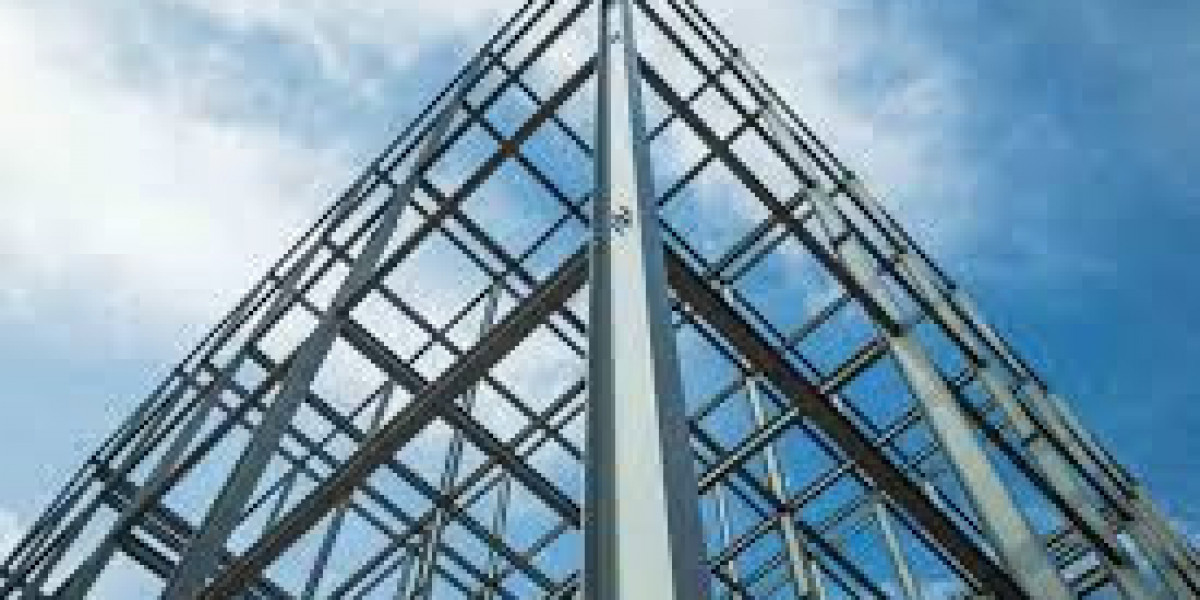In today’s construction landscape, efficiency, sustainability, and durability are no longer optional—they’re essential. As homeowners, architects, and developers search for innovative building solutions, light gauge steel (LGS) homes are emerging as a preferred choice for modern housing projects. This construction method combines precision engineering, reduced construction times, and eco-friendly benefits, making it a powerful alternative to traditional materials like wood or concrete.
The concept of efficient building design solutions for LGS homes goes beyond simply using steel framing—it involves optimizing the entire process, from planning and material selection to energy efficiency, layout design, and long-term performance. When executed correctly, these solutions can significantly reduce costs, improve build quality, and enhance overall living comfort.
In this article, we’ll explore the principles of efficient building design for light gauge steel homes, examine the advantages and challenges, and provide actionable insights for creating cost-effective, durable, and aesthetically pleasing spaces.
Understanding Light Gauge Steel in Residential Construction
Light gauge steel refers to thin sheets of galvanized steel shaped into structural components through a cold-forming process. Unlike heavy structural steel, LGS is lightweight yet exceptionally strong, making it ideal for framing walls, floors, and roofs in residential projects.
Its advantages start with precision—computer-aided manufacturing ensures components are cut to exact measurements, minimizing waste and improving assembly accuracy. Additionally, steel is non-combustible, resistant to pests, and less susceptible to warping or shrinking over time compared to timber.
When combined with modern design software, LGS enables architects and builders to create detailed 3D models, run structural simulations, and plan every joint and connection before the first piece is fabricated. This pre-planning approach is a cornerstone of efficient building design.
Key Principles of Efficient Building Design for LGS Homes
1. Optimized Structural Layout
The design phase should focus on creating a structural layout that balances strength, cost, and aesthetics. By strategically placing load-bearing walls and minimizing material redundancy, you can achieve a stable structure without unnecessary expenses.
Architects often use Building Information Modeling (BIM) software to visualize the steel frame and ensure that every piece fits seamlessly, reducing errors during construction.
2. Energy-Efficient Envelope Design
LGS framing can sometimes create thermal bridges that reduce insulation performance. To maintain energy efficiency, designers can incorporate high-performance insulation, thermal breaks, and double-glazed windows. A well-designed building envelope minimizes heat loss in winter and reduces cooling loads in summer, cutting down on long-term energy costs.
3. Modular and Prefabricated Components
One of the biggest time-saving strategies for LGS homes is prefabrication. Walls, floors, and roof panels can be manufactured off-site and assembled quickly on location, often in a matter of days. This not only speeds up the build but also minimizes weather-related delays and labor costs.
4. Sustainable Material Choices
Steel is highly recyclable, and using LGS contributes to reducing the demand for new raw materials. Pairing steel framing with other eco-friendly materials, such as low-VOC paints, bamboo flooring, and reclaimed wood accents, enhances the home’s sustainability profile.
5. Flexibility in Architectural Design
LGS homes offer flexibility in both form and function. With precise engineering, walls can be placed almost anywhere, allowing for open floor plans, large windows, and creative layouts without compromising structural integrity.
Advantages of Efficient LGS Home Design
Speed of Construction – Prefabricated steel frames can be assembled much faster than traditional masonry or timber builds.
Durability – Resistant to rot, pests, and fire, steel frames provide a longer-lasting structure.
Cost Control – Precision manufacturing reduces material waste, and faster assembly means lower labor costs.
Eco-Friendliness – Steel is recyclable, and LGS homes can be designed for minimal environmental impact.
Design Precision – CAD and BIM tools ensure exact measurements, reducing errors during construction.
Challenges and Considerations
While LGS offers many benefits, there are a few considerations to keep in mind:
Thermal Bridging – Requires proper insulation strategies.
Initial Costs – Material costs can be slightly higher than timber, though often offset by reduced labor expenses.
Specialized Skills – Construction crews may require specific training to work with steel framing systems.
Comparison Table: Light Gauge Steel Homes vs. Traditional Timber Homes
Feature / Factor | Light Gauge Steel Homes | Timber Homes |
Structural Strength | High, uniform quality | Varies, affected by knots & moisture |
Durability | Resistant to pests, rot, and fire | Vulnerable to termites, rot, and fire |
Construction Speed | Faster with prefabrication | Slower due to manual framing |
Sustainability | 100% recyclable steel | Renewable but less recyclable |
Thermal Performance | Needs thermal breaks for efficiency | Naturally insulating |
Material Cost | Moderate to slightly higher | Often lower upfront |
Maintenance Needs | Low | Higher due to pests & warping |
Design Flexibility | High precision and customization | Moderate, with some limitations |
Long-Term Value | High durability & resale potential | Moderate due to wear and tear |
Analysis of the Table
This comparison reveals that while timber homes can have lower initial costs, light gauge steel homes excel in longevity, structural precision, and resilience. The slightly higher upfront investment for LGS is often justified by lower maintenance expenses, faster construction, and better long-term performance. For those prioritizing strength, eco-friendliness, and design versatility, LGS emerges as the clear winner.
Practical Tips for Designing Efficient LGS Homes
Invest in Professional Design Services – Work with architects experienced in steel framing to maximize efficiency and avoid costly mistakes.
Integrate Energy-Saving Features Early – Plan for insulation, window placement, and ventilation during the design stage.
Consider Modular Additions – Prefabricated extensions or add-ons can be incorporated later without structural issues.
Plan for Future Modifications – Steel framing allows for easier wall relocation, so design with adaptability in mind.
Work with Trusted Suppliers – Reliable steel manufacturers ensure consistent quality and timely delivery.
Frequently Asked Questions (FAQ)
Q1: Are light gauge steel homes more expensive than traditional homes?
While the initial material cost of LGS can be slightly higher, savings in labor, reduced waste, and minimal maintenance often make them cost-competitive in the long run.
Q2: Can LGS homes withstand extreme weather?
Yes. Light gauge steel structures are engineered for strength and can resist high winds, heavy snow loads, and seismic activity when designed to code.
Q3: How long does it take to build an LGS home?
Thanks to prefabrication, the framing process can be completed in days rather than weeks, significantly reducing the overall project timeline.
Q4: Is insulation a problem with steel homes?
Not if designed correctly. Incorporating thermal breaks, insulated sheathing, and energy-efficient windows can achieve excellent thermal performance.
Q5: Are LGS homes environmentally friendly?
Absolutely. Steel is recyclable, and its durability reduces the need for frequent repairs or replacements, lowering its long-term environmental impact.
Q6: Can I customize the design of an LGS home?
Yes. Light gauge steel offers high flexibility, allowing for open layouts, unique shapes, and large windows without sacrificing strength.
Conclusion
Efficient building design solutions for light gauge steel homes combine the benefits of advanced materials, precision engineering, and sustainable practices. By integrating thoughtful planning, energy efficiency, and modular construction methods, these homes provide unmatched durability, design freedom, and long-term value.
For homeowners and developers seeking a future-proof building method, LGS offers the perfect balance of performance, speed, and sustainability. The path to a stronger, smarter home begins with choosing the right design approach—and with light gauge steel, the possibilities are virtually limitless.
Ready to take the next step? Partner with experienced designers and builders who specialize in light gauge steel construction and turn your vision into a reality that stands the test of time.








